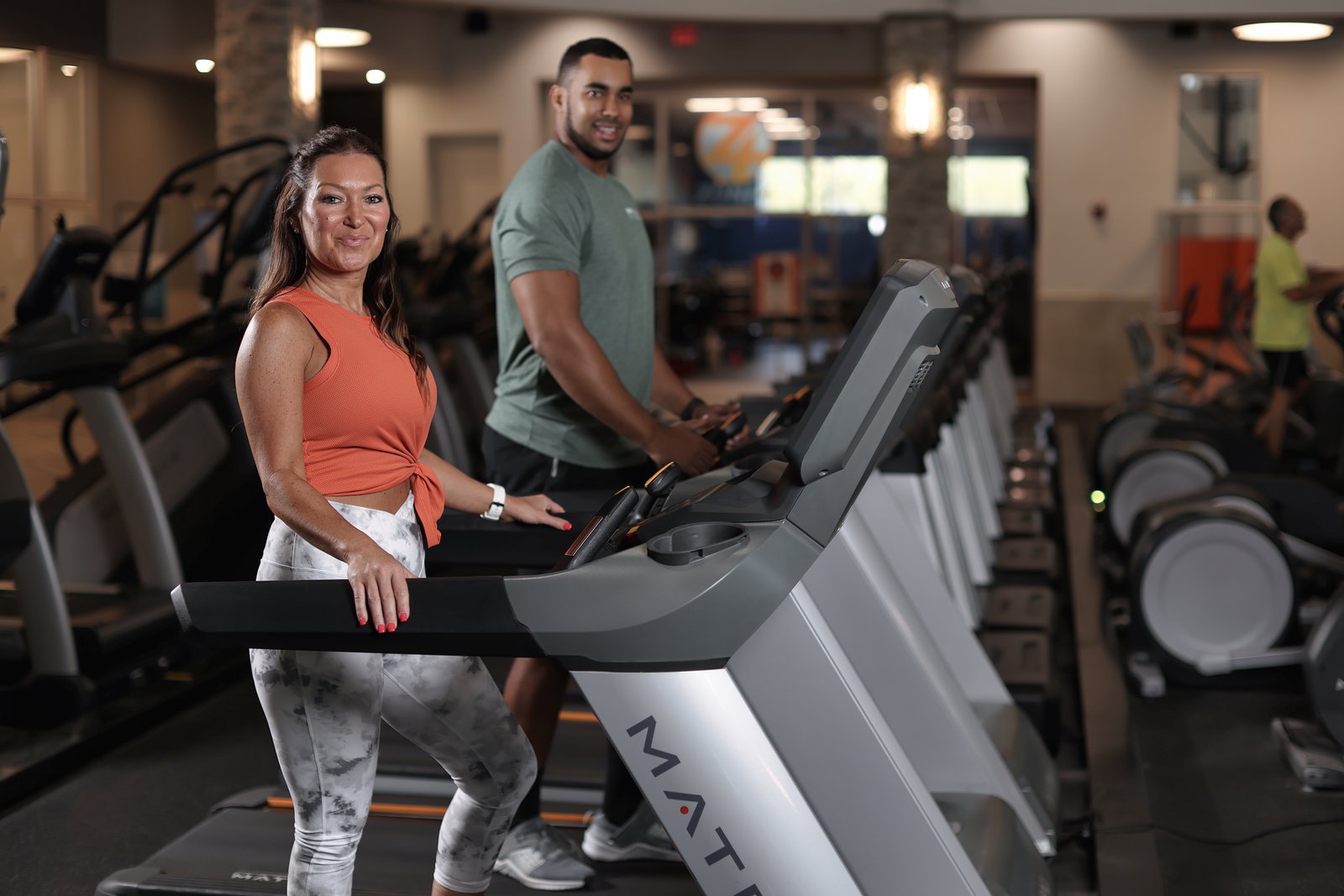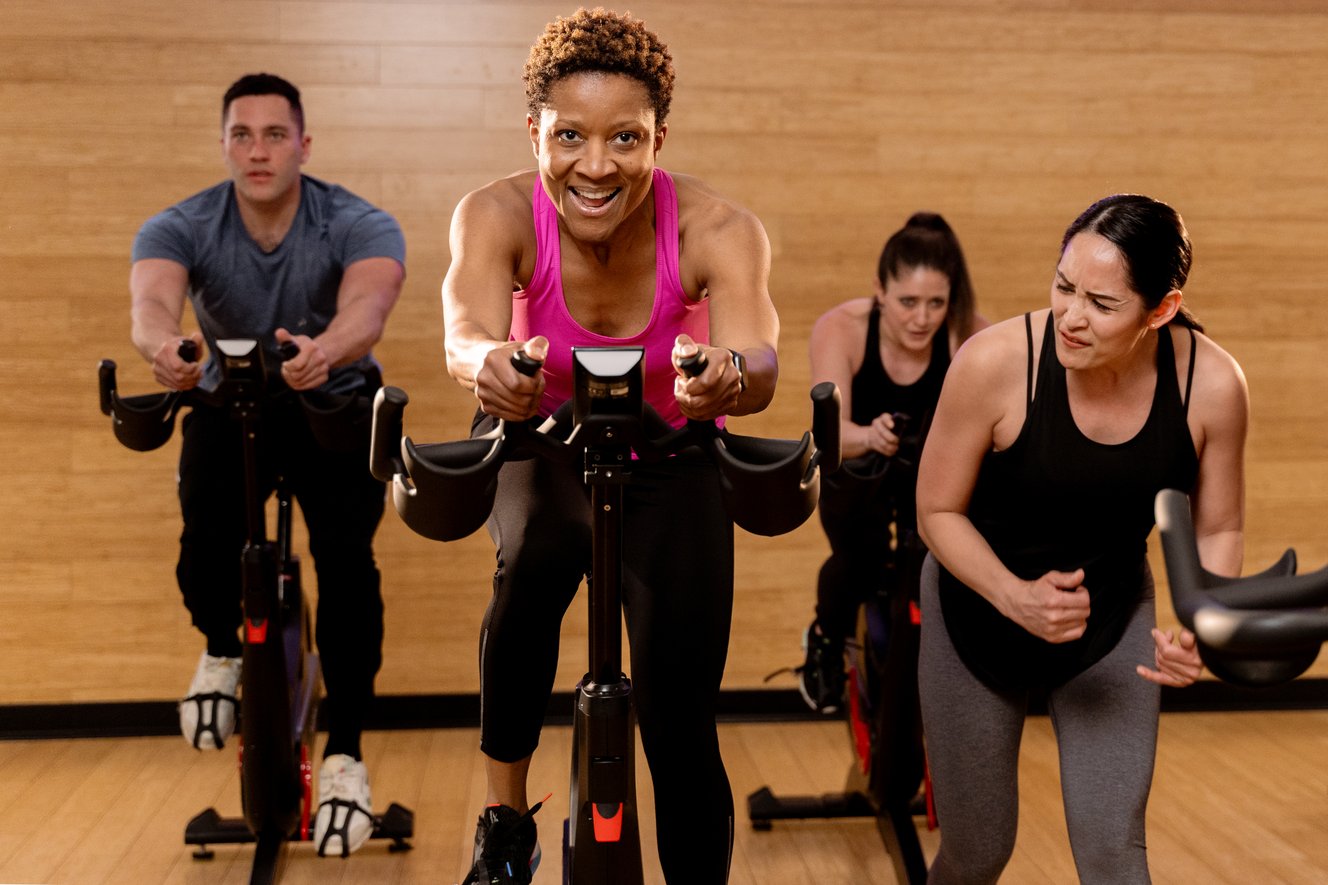High vs. Low-Intensity Cardio: The Fitness Showdown
High vs. Low-Intensity Cardio: The Fitness Showdown
Have you ever wondered about the best way to get your heart pumping? High-intensity cardio or low-intensity, which one wins?
You're not alone. It's a common question many fitness enthusiasts ask.
I remember my early gym days, puzzled by this very dilemma. It's a little like standing at a crossroads with two equally enticing paths beckoning for attention...
This isn't just another "do this" guide. Nope! We're going deep into each path - high and low-intensity cardio – looking closely at what they offer, how they affect our bodies differently, and who might benefit more from each.
But wait... there's more!
We'll also discuss adapting workouts over time and ways to monitor potential risks. Ready? Let's dive right in!
Ready to work out? Get your FREE PASS from Onelife Fitness today!
Understanding High-Intensity Interval Training
High-intensity cardio, often termed HIIT (High Intensity Interval Training), is a workout routine that pushes your body to its limit. It's like running at full speed while dodging obstacles.
This exercise alternates between fixed periods of less intense action or complete rest and intense bursts of activity. A HIIT session may be between 10 and 30 minutes, so it's perfect for those who don't have much time but wanna get a good sweat.
What are the health benefits? Why? Studies show that high-intensity workouts burn more calories during the actual workout and after. This post-workout calorie-burning effect is known as the "afterburn effect," technically referred to as Excess Post-exercise Oxygen Consumption (EPOC).
But here's the kicker: While HIIT has been proven effective in promoting weight loss and improving aerobic fitness, it's no walk in the park. You'll need grit and determination because this isn't just about breaking a sweat—it's about pushing beyond what you thought was possible.
Unpacking Low-Intensity Cardio

Low-intensity cardio, often called 'fat-burning mode,' is all about performing exercises at a steady pace where you can converse. It's usually around 40-60% of your maximum heart rate.
This type of workout lets you burn calories and fat while reducing the risk of injury. It's ideal for those just starting out or with physical restrictions, as the lower intensity reduces joint stress.
Mayo Clinic says low-intensity workouts build endurance and promote cardiovascular health. They also allow extended sessions because they don't wear out your body as quickly as high-intensity workouts.
Examples include walking, light jogging, cycling at an easy pace, or even dancing. But remember to ensure that these activities get your heart pumping - we're still discussing cardio.
Mitigating Risks in Low-Intensity Workouts
The biggest downside? Time efficiency might not be its strongest suit compared to high-intensity interval training (HIIT). However, if managed well with proper scheduling and consistency—low to moderate intensity can lead to substantial long-term results.
Comparing Low-Intensity Cardio vs. High-Intensity Cardio
The exercise's effort, duration, and desired outcome set high-intensity cardio apart from low-intensity. High-intensity workouts like HIIT training are shorter but more demanding. They aim to push your heart rate up quickly.
In contrast, activities like long-distance running or swimming require a more significant duration of effort with less intensity. You can chat during these workouts because they keep your heart rate in a low-intensity, steady state rather than spiking it.
Calorie burn is another crucial distinction. Studies show that although both workout types burn calories during exercise, high-intensity routines continue to burn calories even after the session has ended due to a phenomenon known as EPOC (Excess Post-exercise Oxygen Consumption).
Your body composition might also be affected differently by each type of workout. For instance, a HIIT workout tends to help reduce body fat more effectively, whereas steady-state cardio helps improve endurance levels.
To sum up, give high-intensity workouts a shot if you're short on time or looking for quick weight loss solutions. But remember that every person's fitness journey is unique, so choose what suits your needs best.
Role of Intensity in Cardiovascular Health
Your heart's like a muscle - like other muscles, it needs to be exercised. But the question remains - should you go hard or take it easy? Here's what science says.
Studies show that high-intensity cardio workouts can significantly improve cardiovascular health compared to low-intensity exercises. This cardio workout increases your heart rate, strengthening your heart over time.
But don't discount low-intensity workouts yet. They play an essential role, too. These routines let you work out longer without getting overly tired. Over time, this helps build endurance and improves overall cardiovascular fitness.
The key takeaway here is balance. Like most things, neither extreme works best when maintaining a healthy heart. Combining both, such a high-intensity and low-intensity cardio could be just the ticket to keep your ticker ticking.
Mixing High-Intensity Exercise and Low-Intensity Workouts
To maximize benefits while minimizing risks such as injury or burnout from excessive training or high-intensity exercises, consider alternating between high-intensity days (think sprinting or HIIT classes at Onelife Fitness) with lower-intensity days (like swimming laps).
This approach will give your body recovery time but still allow enough stress to improve strength and stamina progressively.
Choosing Between High and Low Intensity Based on Fitness Goals
Your fitness will be the determining factor in selecting high-intensity and low-intensity cardio. If you want to lose weight fast, the Mayo Clinic suggests that high-intensity workouts can help you burn calories quicker.
Low-intensity cardio exercise may be more suitable for building endurance than its high-intensity counterpart. This type of workout lets you exercise for more extended periods without exhausting yourself too soon, which helps improve stamina over time.
If muscle toning is what you're after, consider mixing both types of exercises into your routine. A study by the American College of Sports Medicine concluded that alternating between more intense and less strenuous activities can optimize muscle growth.
To get started with these routines at Onelife Fitness centers across the East Coast, ask one of our experienced trainers for help crafting a program tailored to your needs - losing weight, increasing stamina, or sculpting muscles.
Considerations for Beginners in Cardio Training

Deciding between high-intensity and low-intensity workouts for a novice in cardio training can be difficult, akin to selecting the right gear when learning to drive. It's like picking the right gear when learning to drive - both have their uses but need different approaches.
High-intensity cardio, often termed Interval Training, is like driving in fifth gear on a highway. You burn more fuel (calories) faster, but intense exercise requires more effort and may not suit everyone.
On the other hand, low-intensity exercises, think leisurely bike rides or brisk walks, are your steady first-gear drives around town. They consume energy at a slow, steady pace but can last longer.
Your fitness goals should guide your choice. For instance, if quick weight loss is what you aim for, high or low-intensity training might be best; however, endurance building usually needs lower intensities over more extended periods.
Also, remember that safety comes first. Ensure you get clearance from a health professional before starting any new workout regimen.
Adapting to High or Low-Intensity Exercise Workouts Over Time
Your body is a remarkable machine, constantly adjusting and adapting. As you start exercising at either high or low intensities, your body will adjust accordingly with time.
When you first kick off high-intensity workouts like HIIT sessions, it may feel challenging. But with consistent training, the exercises become more manageable as your strength increases and recovery times shorten.
In contrast, initially, they might seem easy-going when starting low-intensity activities such as swimming or cycling at Onelife Fitness centers across the East Coast. However, these, too, require adjustments from your body in terms of stamina build-up and endurance improvement.
This phenomenon of bodily adjustment in aerobic exercise is due to the progressive overload principle. This science-backed concept states that gradually increasing stress on your body during exercise forces adaptation, leading to improved fitness.
To keep progressing towards better health and fitness goals despite these adaptations: mix up routines frequently; challenge yourself by incrementally adding difficulty into workouts (like resistance in weightlifting); ensure proper rest days for muscle recovery; fuel up well before and after exercising.
Potential Risks and How to Mitigate Them
Doing cardio, whether it's high-impact or low-key, has its risks. But don't let this scare you away from the treadmill or bike. Knowing these potential hazards can help us dodge them effectively.
Risks in High-Intensity Cardio
High-intensity cardio, like HIIT workouts (High-Intensity Interval Training), might lead to injuries if not done correctly due to their demanding nature. It could stress your joints or even trigger heart issues for those with a cardiovascular disease history.
To reduce these risks, warm up adequately before each session and use proper form during exercises. Consulting a professional trainer at Onelife Fitness would be beneficial, too.
Risks in Low-Intensity Cardio
Although low-intensity cardio, such as long-distance running, is unlikely to cause injury, overuse injuries can still occur without caution. Also, it may result in muscle mass loss over time because of prolonged activity without enough protein intake.
To avoid such problems, balance your routine with strength training sessions and ensure adequate daily protein consumption.
FAQs about High-Intensity Vs. Low-Intensity Cardio
Is low-intensity or high-intensity cardio better?
Both are great, but your choice should depend on your fitness goals. High-intensity burns more calories quickly, while low-intensity is easier on the body and can be sustained longer.
Is it better to do low-intensity cardio?
Suppose you're just starting or have specific health considerations, yes. Low-intensity cardio is less taxing and helps build endurance gradually without risking injury.
Are high intensity workouts or low intensity workouts better for weight loss?
High-intensity workouts tend to burn more calories in a shorter time frame, which could help speed up weight and fat loss if paired with a healthy diet.
Is High-Intensity cardio better for weight loss?
This largely depends on individual factors such as current fitness level and lifestyle. While it does burn more calories per session, consistency matters most when losing weight, so pick what you'll stick with.
Conclusion
So, we've ventured down both paths of High-Intensity and Low-Intensity Cardio. We've looked at the benefits, drawbacks, and adaptations over time.
High-intensity cardio offers a calorie-torching workout in less time. But remember: it can be harsh on the body!
Low-intensity cardio is gentler yet delivers results - think endurance and weight loss. For novices, it's simpler to kick off circuit training with this one.
Your fitness goals will dictate which path you choose...or maybe you'll take turns on each? Either way – start moving!
Last but not least – keep safety front of mind! Start slow, listen to your body, and make adjustments as needed.
Contact Onelife Fitness for your FREE PASS and all our gym classes across WV, DC, VA, MD, & GA. We look forward to helping you on your health and fitness journey!